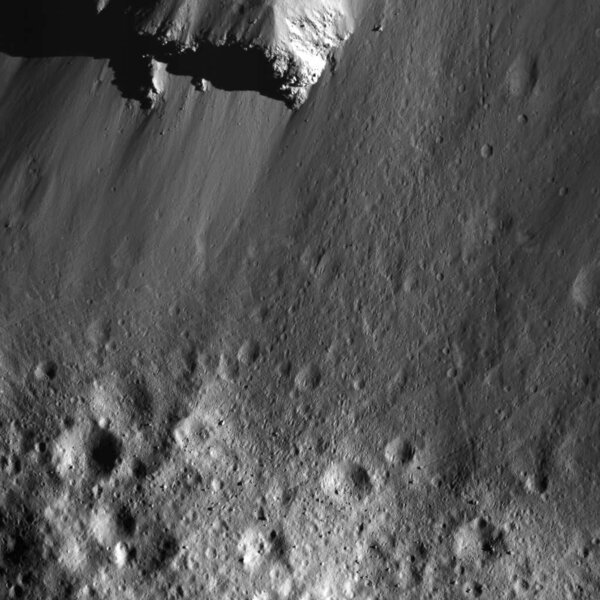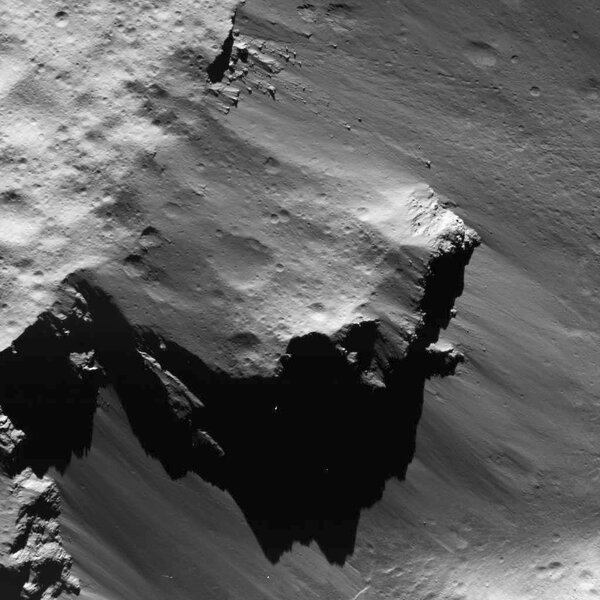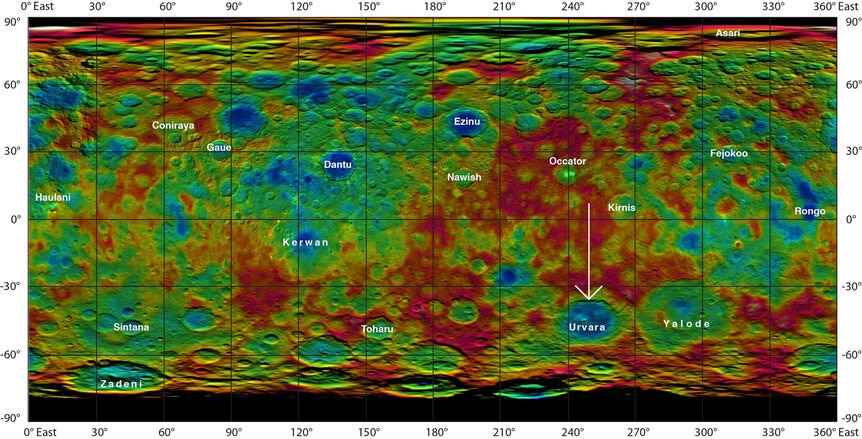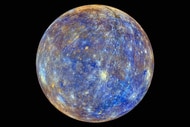Create a free profile to get unlimited access to exclusive videos, sweepstakes, and more!
Rolling stones tour Ceres
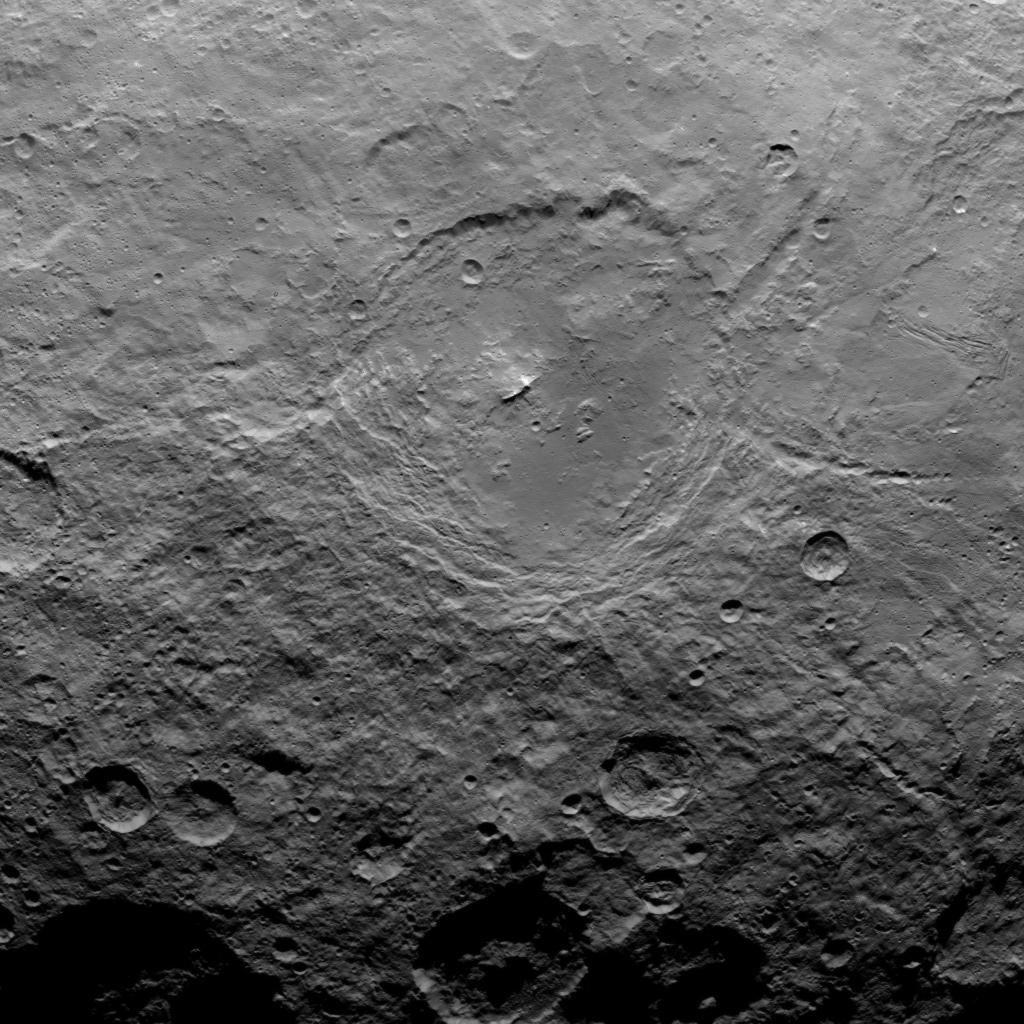
OK, so maybe that headline might not be exactly what you thought it was. But it is, literally, true. And it’s actually rock and roll.
The Dawn spacecraft arrived at the protoplanet Ceres* in March of 2015. It’s been orbiting the 941-kilometer-wide rock ever since, mapping the surface. Far from a static, unchanging world, Ceres has been revealed to have had a dynamic past, with ice volcanoes (cryovolcanoes, a word I love) erupting salty water onto the surface, and may possibly still have a liquid water ocean deep under the surface.
To be sure, it’s not like Ceres is active like Earth is. It’s small and cold, and so the surface hasn’t changed substantially in millions of years, if not more. But if you look close enough you can see evidence that some things have moved. Even rolled…
That image was taken by Dawn on July 29, 2018. It shows a small portion of the giant crater Urvara, a massive impact site 163 km across in Ceres’ southern hemisphere. The image is of a small area near the northern rim of the crater, right at the base of a hill (possibly right where the floor slopes up into the rim). The top of the image is upslope, so if you walked from the top of this shot to the bottom you’d be walking downhill.
At the top is a massive block of rock that apparently broke free from near the top of the hill and slid down a bit (see image farther down). That’s pretty cool. But look next to it. You can see dimpled tracks running downhill: Those are from boulders rolling down the slope!
That is so cool. At the bottom of most of the tracks you can even see the culprits, large boulders that came to rest at the hill’s foot. The tracks are dimpled almost certainly because the rocks bounced as they moved; the gravity on the surface if Ceres is about 3% that of Earth, so any irregularities in the rock as it rolled would launch it off the ground.
What a sight that would be! Huge gray rocks slowly tumbling down the crater wall, bounding into the sky, then coming down again, all in exxxxtreeemeeeelyyyy slooooow moooooootion…
Another thing I noticed which is subtle but fascinating: Look at the density of craters in the image. The floor is packed with them, overlapping everywhere, but the slope itself has far fewer. Also, note the contrast between floor and wall; the bottom is brighter and the slope darker.
That’s evidence of mass wasting, material flowing down the wall (and is seen in lots of places on Ceres). As the rim slowly erodes (due to sunlight warming ice mixed in with the rock, weakening the structural integrity?), the debris flows down. It piles up at the bottom of the wall, creating the slope we see. It’s rocky but also filled with smaller grains, making it appear smoother and darker. It’s younger than the floor, so hasn’t as much time to get whacked by impacts. And note the slope craters look softer, which would make sense if there’s more fine material mixed in there.
I’m guessing here a bit, but I’d bet a buck or two I’m pretty close. Ceres is really weird in many ways, but we’ve seen behavior like this before, including on the Moon and Mars.
I love shots like this. I wouldn’t say it looks like home, but it does somehow look familiar. Rockslides and such on Earth produce similar vistas, and I’ve seen tracks by boulders here on our home planet that look like these.
Also, I like the artistic irony of it. It shows something dynamic, something that moved, even though all seems unchanging and frozen now.
There’s also a bittersweet side to it. The Dawn mission is nearing its end. It’s running out of hydrazine, the fuel it uses in its attitude control thrusters that maintain the spacecraft’s orientation. It’s not clear exactly how much is left, and at exactly what rate Dawn is using it up. But the prediction is that it will run out very soon, maybe even before the end of the month. Yes, in the next few days. It may last weeks yet, but there will come a time when Dawn tries to activate its thrusters and nothing will happen.
And then the mission is effectively over.
That will be sad, but I have to say: What a mission it’s been! First it spent a year orbiting Vesta, then it moved on to Ceres, and has revolutionized the way we think about these two massive bodies, worlds that dominate the asteroid belt between Mars and Jupiter. I’ll have more thoughts on this when the end comes. For now, though, I will still revel in images like these, showing us a world both alien and familiar, well over 200 million kilometers from our own home.
*You’ll see various names for Ceres and Vesta here and there: dwarf planet, or asteroid. Planetary scientists I’ve talked to prefer “protoplanet,” indicating the worlds were on their way to becoming planets when they stopped growing. It also distinguishes them from the generic asteroids, which are rubble left over from collisions between larger bodies in the asteroid belt.
